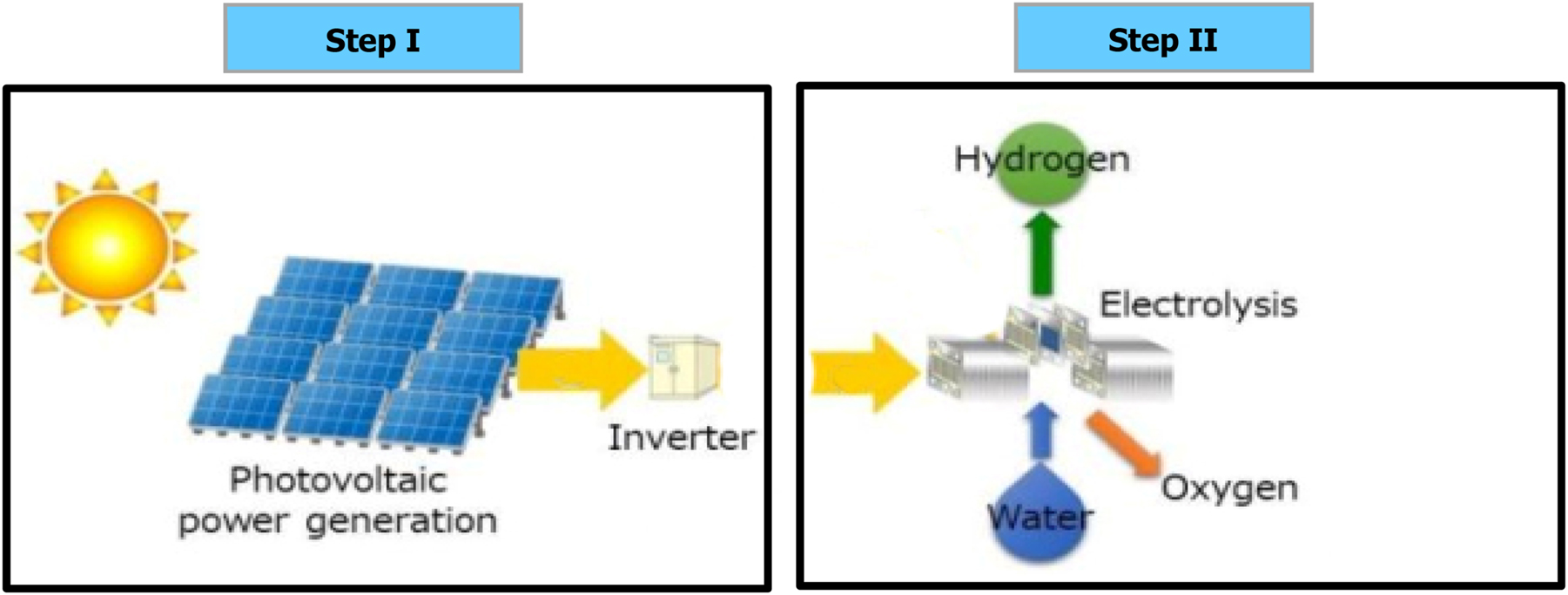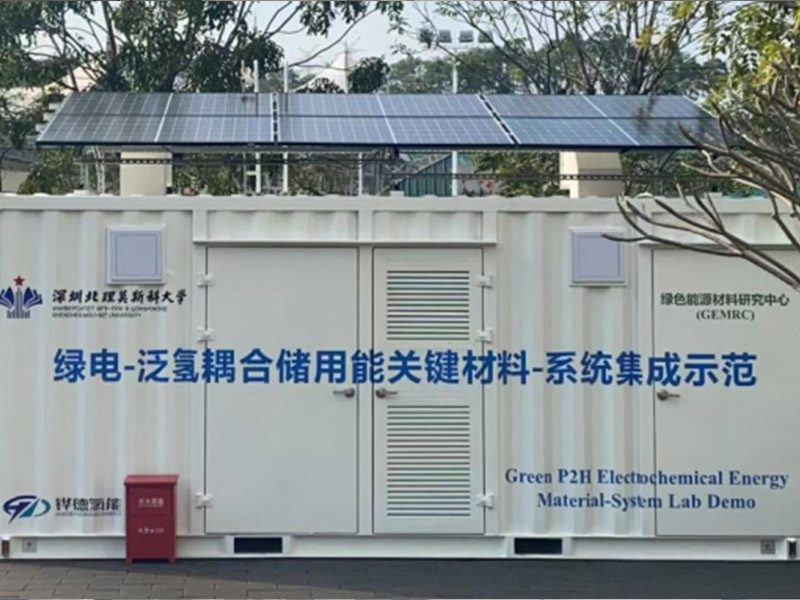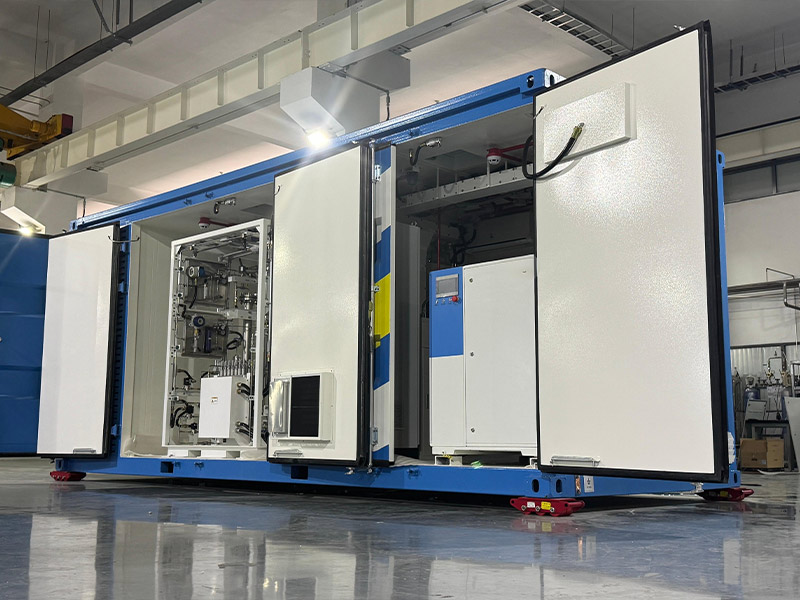The combination of solar energy and hydrogen power generation is an emerging frontier in the energy sector. Solar-to-hydrogen systems, which use solar panels to power electrolysis and produce hydrogen, offer a promising solution for sustainable energy storage and generation. However, understanding the economics of such systems is crucial to evaluating their viability, scalability, and potential impact on the future energy landscape. In this article, we will break down the various factors that influence the economics of solar-to-hydrogen power generation, including costs, market trends, and long-term benefits.
Solar-to-hydrogen power generation involves using solar panels to generate electricity, which is then used to split water molecules into hydrogen and oxygen through a process called electrolysis. The hydrogen gas produced can be stored and used as a clean energy source for electricity, heating, or transportation.
The key components of a solar-to-hydrogen system include:
Solar Panels: Capture sunlight and convert it into electricity.
Electrolyzers: Use electricity to split water into hydrogen and oxygen.
Storage Systems: Store the hydrogen for later use.
Fuel Cells: Convert stored hydrogen back into electricity when needed.

The capital investment required for setting up a solar-to-hydrogen system is one of the main economic factors to consider. The costs are largely driven by the price of solar panels, electrolyzers, storage systems, and the associated infrastructure.
Key Costs:
Solar Panels: The cost of solar panels has been decreasing over the years. Prices for solar panels have dropped significantly, making solar energy more accessible. On average, solar panel costs can range from $0.20 to $0.50 per watt depending on the technology and installation.
Electrolyzers: Electrolyzers are the most expensive component of the system, with prices ranging from $600 to $1,000 per kW for PEM (Proton Exchange Membrane) electrolyzers, which are commonly used in solar-to-hydrogen applications. The electrolyzer’s efficiency and scale play a crucial role in overall cost.
Storage Systems: Storing hydrogen requires specialized tanks and infrastructure that can withstand high pressures. These costs depend on the storage capacity and the required safety standards.
Other Costs: Additional expenses include inverters, wiring, installation labor, and ongoing maintenance.
In total, a solar-to-hydrogen system can have initial installation costs ranging from $3,000 to $10,000 per installed kilowatt (kW) depending on the size and location of the system. However, these costs are expected to decrease as technology advances, and economies of scale are realized.
Once the system is installed, there are still operational and maintenance (O&M) costs to consider. These costs are generally lower than the initial installation costs, but they must still be accounted for when evaluating the economics of solar-to-hydrogen power generation.
Key O&M Costs:
Maintenance of Solar Panels: Solar panels typically require minimal maintenance, with cleaning and occasional inspection. The maintenance cost is relatively low compared to other components of the system.
Electrolyzer Maintenance: Electrolyzers may require periodic maintenance, including cleaning, replacing parts, and software updates. However, the lifespan of most electrolyzers is expected to exceed 10 years.
Storage and Fuel Cell Maintenance: Hydrogen storage systems and fuel cells require regular inspections and servicing to ensure safety and efficiency.
Overall, operational costs are expected to range from $0.01 to $0.05 per kilowatt-hour (kWh) of energy produced.
Government incentives and subsidies play a significant role in reducing the financial barriers to adopting solar-to-hydrogen systems. Many governments around the world are offering financial support in the form of grants, tax credits, and subsidies to encourage the development of renewable energy solutions like hydrogen.
Grants and Tax Credits: Countries like the United States, Germany, Japan, and Australia offer incentives that can reduce the upfront capital cost of solar-to-hydrogen systems by 30% or more.
Renewable Energy Mandates: In some regions, renewable energy mandates require utilities to purchase a certain percentage of their energy from renewable sources, which boosts the demand for solar and hydrogen-based power.
Research and Development Funding: Governments and private institutions are also investing in research and development (R&D) to reduce the cost of electrolyzers, improve efficiency, and make hydrogen production more economically viable.
As the solar-to-hydrogen industry matures, there are several key trends that could significantly impact the economics of the technology:
Declining Costs:
The cost of solar panels has fallen dramatically over the past decade and is expected to continue decreasing. The falling cost of solar technology, combined with advancements in electrolyzer efficiency, will make solar-to-hydrogen systems more affordable and accessible.
Scalability:
Solar-to-hydrogen systems are highly scalable, from small residential setups to large industrial plants. As the market expands, economies of scale will help drive down the cost per unit of hydrogen produced.
Market Demand:
As the global energy transition continues, demand for clean, sustainable energy solutions is expected to rise. Hydrogen is seen as a key part of this transition, particularly for sectors that are difficult to electrify, such as heavy industry and transportation.
Energy Storage and Grid Stability:
One of the main advantages of hydrogen is its potential as an energy storage solution. Hydrogen can store excess solar energy produced during the day and release it during periods of low sunlight, providing a stable energy source for the grid. This is especially valuable for regions with intermittent renewable energy sources.
Despite the high upfront costs, the long-term benefits of solar-to-hydrogen power generation can be substantial. The payback period for solar-to-hydrogen systems typically ranges from 8 to 15 years, depending on factors such as local energy prices, government incentives, and system efficiency.
Key Benefits:
Energy Independence: Solar-to-hydrogen systems enable homeowners and businesses to produce and store their own energy, reducing reliance on the grid and fossil fuels.
Reduced Energy Bills: Over time, the system can significantly reduce or eliminate monthly energy costs by generating free solar electricity and hydrogen for use during peak demand times.
Environmental Impact: Solar-to-hydrogen systems produce zero emissions and contribute to a cleaner, more sustainable energy future.
The economics of solar-to-hydrogen power generation is evolving rapidly, with declining costs, increasing efficiency, and growing government support. While the initial investment can be high, the long-term benefits—energy independence, reduced energy costs, and environmental sustainability—make it an increasingly attractive solution. As technology continues to improve and scale, solar-to-hydrogen systems will play a crucial role in shaping the future of clean energy production.
It’s the process of using solar energy to produce hydrogen through electrolysis, which can be stored and used as clean fuel.
Electrolysis splits water into hydrogen and oxygen using electricity from solar panels.
The main costs are for solar panels, electrolyzers, hydrogen storage, and installation.
It typically takes 8 to 15 years to recover the cost, depending on energy savings and incentives.
Yes, many governments offer subsidies or tax credits for clean energy systems.
Solar-to-hydrogen systems produce zero emissions, helping to reduce pollution and fight climate change.
Yes, hydrogen can be stored for use on cloudy days or at night.
Yes, it can be used for both small homes and large industrial projects.
The technology is improving, and costs are expected to decrease, making it more affordable in the future.
Yes, it can work alongside your current energy setup and even sell excess energy back to the grid.


